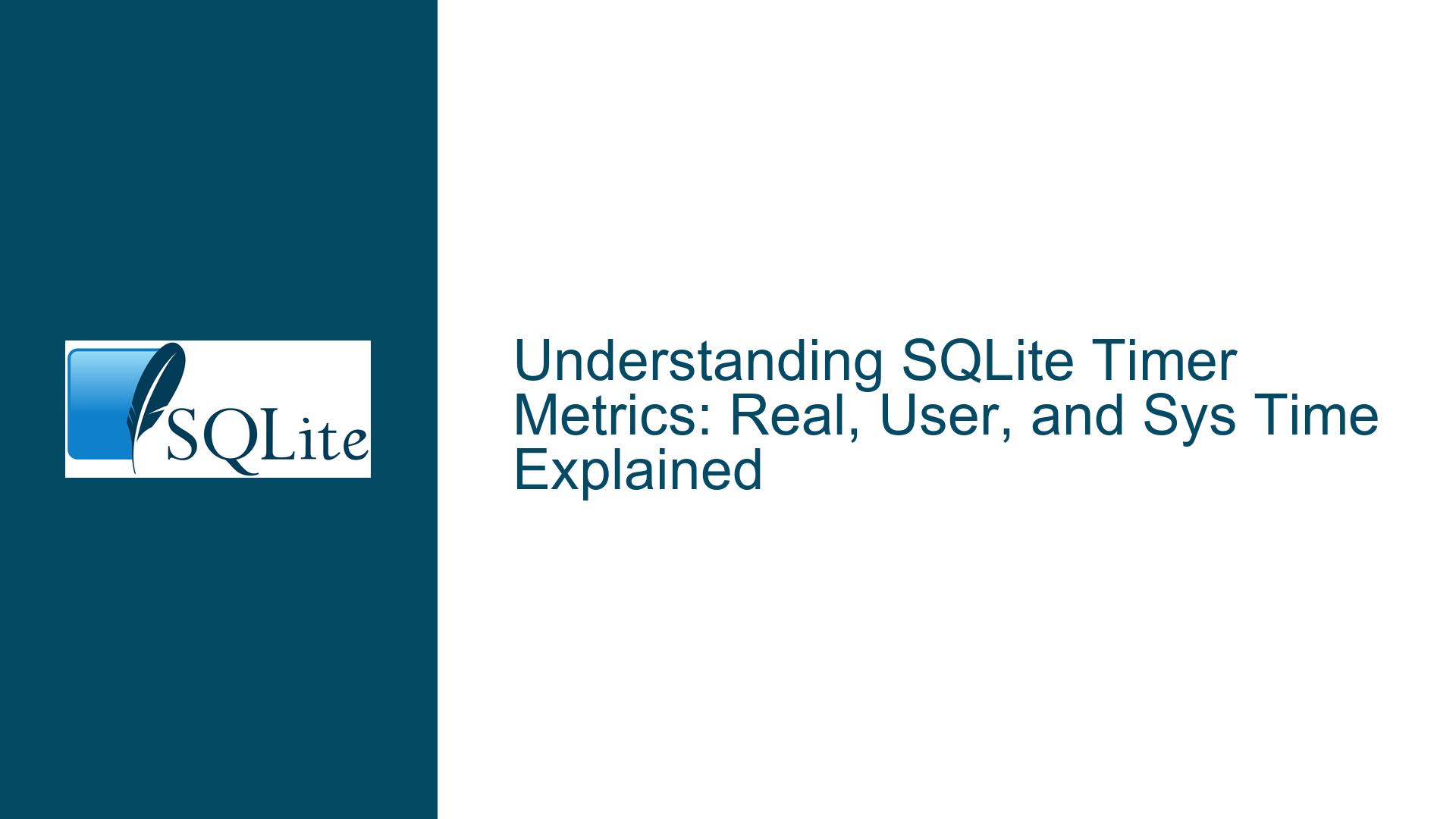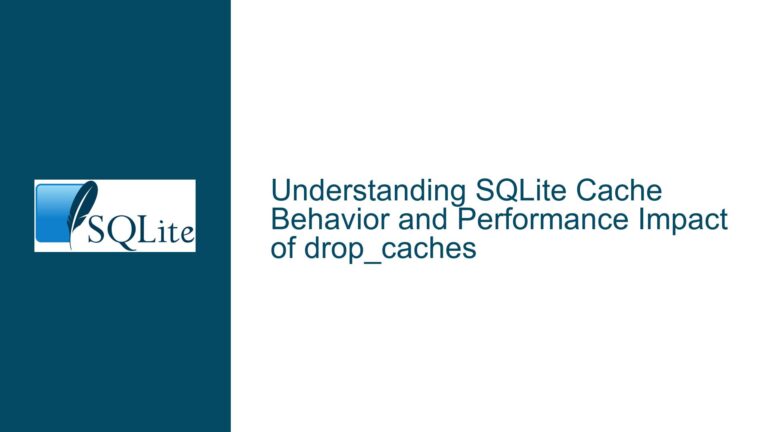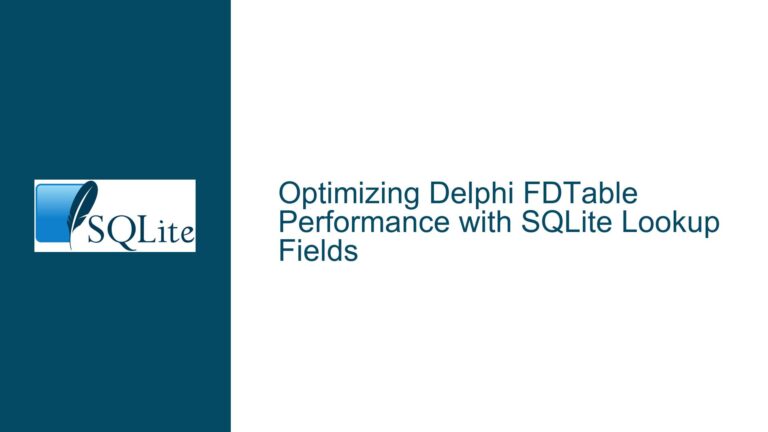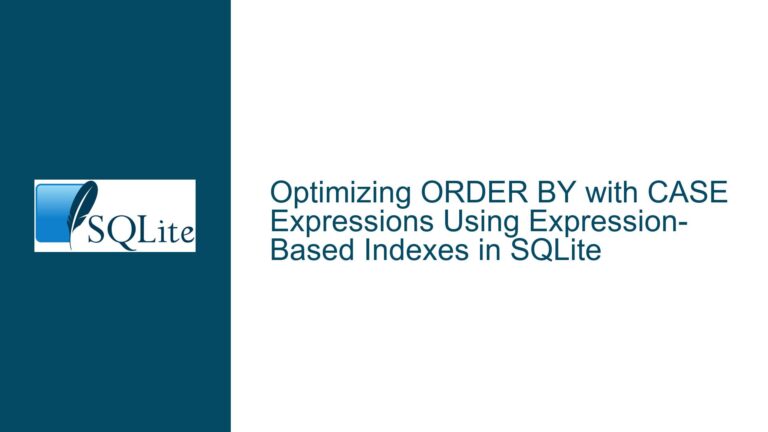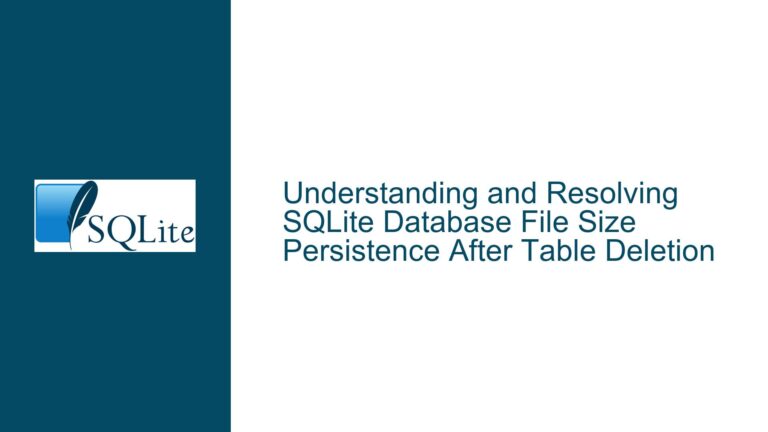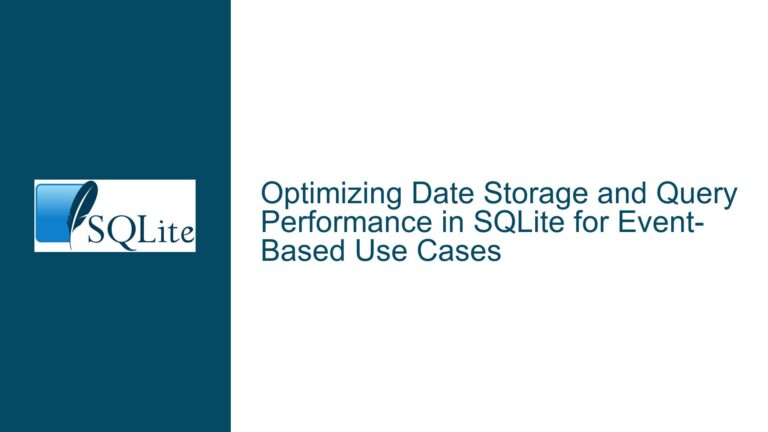SQLite Timer Metrics: Real, User, and Sys Time Explained
SQLite Timer Metrics: Real, User, and Sys Time
When working with SQLite, understanding the performance metrics provided by the .timer command is crucial for diagnosing and optimizing database operations. The .timer command in SQLite provides three key metrics: real, user, and sys time. These metrics offer insights into the time taken by a command to execute, broken down into different categories of CPU usage. However, interpreting these metrics requires a clear understanding of what each term represents and how they relate to the underlying system operations.
The real time represents the total elapsed time from the start to the end of a command, as measured by the wall clock. This is the time you would measure with a stopwatch, and it includes all delays, such as waiting for I/O operations or other processes to complete. The user time, on the other hand, represents the amount of CPU time spent executing user-mode code, which includes the actual computation and processing done by the SQLite engine. The sys time represents the CPU time spent in kernel-mode, which includes system calls, I/O operations, and other overhead managed by the operating system.
These metrics are particularly useful when diagnosing performance bottlenecks. For instance, if the real time is significantly higher than the sum of user and sys times, it indicates that the process is spending a lot of time waiting for external resources, such as disk I/O or network latency. Conversely, if the user and sys times are high relative to the real time, it suggests that the process is CPU-bound, and the bottleneck lies in the computational or system overhead.
Interpreting Timer Metrics in Different Operating Systems
The precise definition of real, user, and sys times can vary depending on the underlying operating system. On Unix-like systems, these metrics are typically retrieved using the getrusage system call, while on Windows, the GetProcessTimes API is used. The real time is usually obtained from the platform’s gettimeofday routine or its equivalent.
On Unix-like systems, the user time includes the CPU time spent executing user-mode code, while the sys time includes the CPU time spent in kernel-mode on behalf of the process. This distinction is important because it allows you to differentiate between time spent on actual computation (user time) and time spent on system overhead, such as I/O operations (sys time). On Windows, the GetProcessTimes API provides similar metrics, but the exact implementation details may differ.
The way these metrics are reported can also be influenced by the environment in which the SQLite command is executed. For example, if the output is displayed on a native text console, the time spent on rendering the output will generally be included in the sys time, as the operating system is managing the display on behalf of the process. However, if the output is displayed through a graphical interface like X Windows, the rendering time will be accounted for in the real time, as the display management is handled by a separate process.
Aligning Timer Metrics with Application Code
When integrating SQLite into an application, developers often need to align the timer metrics reported by the .timer command with the timing measurements taken within their own code. For example, a developer might use a stopwatch to measure the elapsed time between the sqlite3_prepare_v2() and sqlite3_step() API calls and compare this with the user time reported by .timer.
However, it’s important to note that the .timer command measures the total time taken by the entire shell command, which includes not only the SQLite API calls but also the overhead of the shell tool itself. This means that the user time reported by .timer includes not only the time spent in sqlite3_prepare_v2() and sqlite3_step() but also the time spent in other API calls, such as sqlite3_finalize(), as well as the time spent by the shell tool to process the command and display the output.
Therefore, the user time reported by .timer should not be directly equated with the elapsed time measured between sqlite3_prepare_v2() and sqlite3_step() in the application code. Instead, the user time should be seen as a broader measure of the CPU time spent executing user-mode code across the entire command, including both the SQLite API calls and the shell tool’s overhead.
Diagnosing Performance Bottlenecks Using Timer Metrics
The real, user, and sys times provided by the .timer command can be used to diagnose various types of performance bottlenecks in SQLite operations. For example, if the real time is much higher than the sum of user and sys times, it suggests that the process is spending a significant amount of time waiting for external resources, such as disk I/O or network latency. This could indicate that the database is located on a slow storage device or that the network connection is experiencing high latency.
On the other hand, if the user and sys times are high relative to the real time, it suggests that the process is CPU-bound, and the bottleneck lies in the computational or system overhead. This could be due to complex queries that require a lot of processing power or inefficient use of system resources, such as excessive context switching or memory management overhead.
In some cases, the sys time may be disproportionately high compared to the user time, indicating that the process is spending a lot of time in kernel-mode. This could be due to frequent I/O operations, such as reading or writing large amounts of data to disk, or excessive use of system calls. In such cases, optimizing the I/O operations or reducing the number of system calls can help improve performance.
Optimizing SQLite Performance Based on Timer Metrics
Once you have identified the performance bottleneck using the real, user, and sys times, you can take steps to optimize the SQLite operations. For example, if the real time is high due to slow disk I/O, you might consider moving the database to a faster storage device or optimizing the database schema to reduce the amount of data that needs to be read or written.
If the user time is high, it suggests that the process is spending a lot of time executing user-mode code, which could be due to complex queries or inefficient algorithms. In this case, optimizing the queries or improving the algorithms can help reduce the user time. For example, you might consider using indexes to speed up query execution or rewriting the queries to reduce the number of operations required.
If the sys time is high, it suggests that the process is spending a lot of time in kernel-mode, which could be due to frequent I/O operations or excessive use of system calls. In this case, optimizing the I/O operations or reducing the number of system calls can help reduce the sys time. For example, you might consider using batch operations to reduce the number of I/O operations or optimizing the memory management to reduce the overhead of system calls.
Conclusion
Understanding the real, user, and sys times provided by the .timer command in SQLite is essential for diagnosing and optimizing database performance. These metrics offer valuable insights into the time taken by a command to execute, broken down into different categories of CPU usage. By interpreting these metrics correctly and aligning them with the timing measurements taken within your application code, you can identify performance bottlenecks and take steps to optimize the SQLite operations.
Whether the bottleneck lies in slow disk I/O, excessive computational overhead, or frequent system calls, the real, user, and sys times provide a clear indication of where the problem lies. By addressing these issues, you can improve the performance of your SQLite database and ensure that it runs efficiently, even under heavy load.
